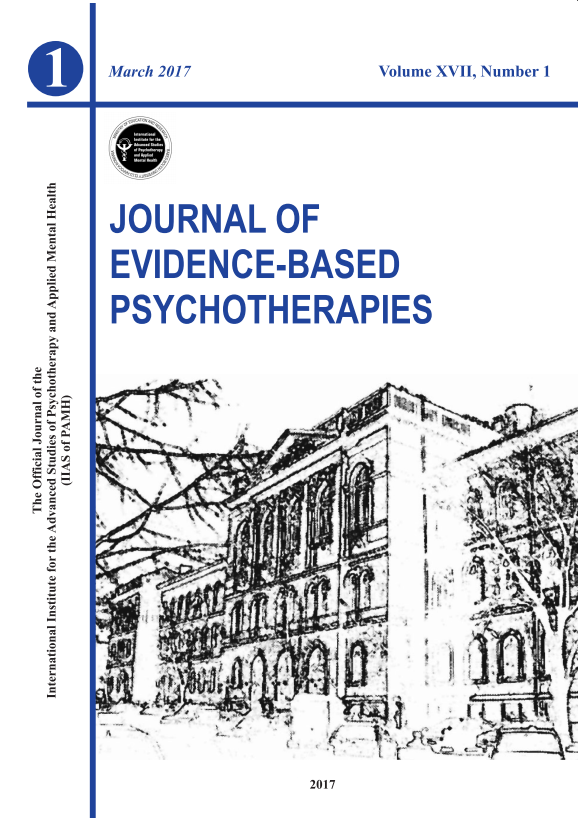Binary Model Of Distress 3
THE IMPACT OF GENERAL AND SPECIFIC RATIONAL AND IRRATIONAL BELIEFS ON EXAM DISTRESS; A FURTHER INVESTIGATION OF THE BINARY MODEL OF DISTRESS AS AN EMOTIONAL REGULATION MODEL
Terry DILORENZO*1, Daniel DAVID2, 3, Guy H. MONTGOMERY 3 1Stern College for Women, Yeshiva University, New-York, USA 2Babes-Bolyai University, Cluj-Napoca, Romania 3Mount Sinai School of Medicine, New York, USA Abstract The aims of the present study are to examine the relations between both general and specific rational and irrational beliefs, personality characteristics (optimism, pessimism), […]
The profile of emotional distress; norms for the Romanian population
The Profile of Emotional Distress (PED) is an instrument elaborated to assess the subjective dimension of functional and dysfunctional negative feelings (affect). To our knowledge, this is the first self-report instrument, elaborated based on Albert Ellis’s binary model of distress, designed to focus solely on the subjective dimension of emotions. Reliability, validity, and normation studies for the Romanian population were conducted on a group larger than 700 participants. Internal consistency coefficients (Cronbach’s alphas) ranged from .75 to .94, which are considered good values for a self-report instrument.
The distinction between functional and dysfunctional negative emotions; an empirical analysis
At present, in the scientific literature concerning negative emotions and distress the unitary model of distress is the dominant model. According to this model, high levels of distress are conceptualized as a high level of negative affect while low levels of distress are conceptualized as a low level of negative affect. The binary model of distress, initially elaborated by Albert Ellis (1994), describes distress as a binary construct, consisting of two distinct components: functional negative emotions and dysfunctional negative emotions. In the present study, using 72 first year undergraduate students as subjects, we tested hypotheses based on the two models of distress: the unitary model and the binary model. The outcome shows qualitative differences between functional negative emotions and dysfunctional negative emotions, gaining support for the binary model of distress. Promising practical implications for psychotherapy are discussed.
Categories
- Vol XXIV, No.1, 2024, Special Issue (9)
- Vol XXIII, No.2, 2023 (9)
- Vol XXIII, No.1, 2023, Special Issue (8)
- Vol XXII. No.2, 2022 (9)
- Vol XXII, No.1, 2022 (9)
- Vol XXI, No. 2, 2021 (11)
- Vol XXI, No. 1, 2021 (8)
- Vol XX, No.2, 2020 (10)
- Vol XX, No.1, 2020 (8)
- Vol XIX, No.2, 2019 (9)
- Vol XIX, No.1, 2019 (9)
- Vol XVIII, No. 2, 2018 (10)
- Vol XVIII, No. 1, 2018 (10)
- Vol XVI, No. 2, 2016 (9)
- About (7)
- Vol XVII, No. 2, 2017 (10)
- Vol XVII, No. 1, 2017 (9)
- Vol XVI, No. 1, 2016 (9)
- Vol XV, No. 2, 2015 (9)
- Vol XV, No. 1, 2015 (12)
- Vol XIV, No. 2, 2014 (13)
- Vol XIV, No. 1, 2014 (7)
- Vol XIII, No. 2, 2013 (13)
- Vol XIII, Special Issue 2a, 2013 (11)
- Vol XIII, Special Issue 1a, 2013 (7)
- Vol XIII, No. 1, 2013 (8)
- Vol XII, No. 2, 2012 (8)
- Vol XII, No. 1, 2012 (9)
- Vol XI, No. 2, 2011 (11)
- Vol XI, No. 1, 2011 (8)
- Vol X, No. 1, 2010 (9)
- Vol IX, No. 2, 2009 (8)
- Vol IX, No. 1, 2009 (9)
- Vol VIII, No. 2, 2008 (11)
- Vol VIII, No. 1, 2008 (9)
- Vol VII, No. 2, 2007 (5)
- Vol VII, No. 1, 2007 (7)
- Vol VI, No. 2, 2006 (9)
- Vol VI, No. 1, 2006 (8)
- Vol V, No. 2, 2005 (7)
- Vol V, No. 1, 2005 (6)
- Vol IV, No. 2, 2004 (3)
